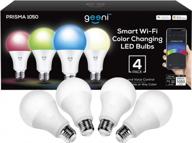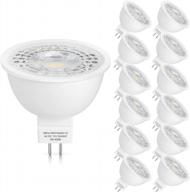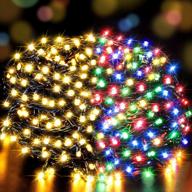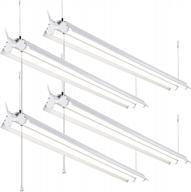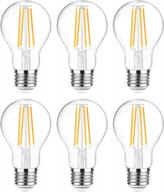How to choose the right wattage for your lighting needs?
When selecting light bulbs, one of the most important factors to consider is the wattage. The wattage indicates how much energy the bulb uses and how bright the light will be. Choosing the right wattage bulb for your specific lighting needs will ensure you get the desired brightness and ambiance.
Tips for selecting the right wattage:
- For general household lighting like table lamps or overhead fixtures, good wattage ranges are:
- 40W - 60W for a soft glow
- 60W - 100W for brighter task lighting
- For mood lighting like floor lamps or wall sconces, lower wattages around 25W-40W are recommended.
- Higher wattage bulbs above 100W are best suited for large spaces like living rooms, kitchens, and porches.
- Outdoor lighting generally requires higher wattages - anywhere from 60W to 150W.
Tips for specific bulb types:
| Bulb Type | Recommended Wattage Range |
|---|---|
| LED | 2W - 100W |
| CFL | 5W - 43W |
| Incandescent | 25W - 150W |
| Halogen | 10W - 150W |
When in doubt, choose the lower wattage. You can always move up if more light is needed. But higher wattages use more electricity and could be too bright or hot for some fixtures.
By selecting the appropriate wattage bulb for each lighting application, you'll get the perfect amount of illumination while optimizing energy efficiency.
How to dim these bulbs?
Vintage Edison-style bulbs with their exposed filaments create a beautiful ambiance. Being able to dim them allows you to control the mood and adapt the lighting to your needs.
Ways to dim Edison bulbs:
- Use a dimmer switch or dimmer knob specifically designed for use with incandescent bulbs. Many modern dimmers are made for LEDs or CFLs only.
- Install a dimmer that uses a variable resistor or potentiometer rather than solid state technology. These work better with incandescent bulbs.
- Choose a quality dimmer - cheaper models may buzz, flicker, or alter the bulb's color temperature.
Tips for dimming:
- Check bulb and dimmer wattage compatibility. Always use a dimmer rated for higher wattage than the bulbs.
- For the best dimming range, limit bulbs on a single dimmer to 5 or 6 at most.
- LED and CFL bulbs often don't dim well on older dimmers. Use incandescent-compatible dimmers.
- Avoid using a dimmer and switch together on the same circuit. Use one or the other.
Start dimming from the maximum setting first, then gradually reduce to find the desired light level. Take care not to overload the circuit when using multiple bulbs.
With the right dimming equipment, you can easily control these Edison-style bulbs to create perfect ambiance and vintage appeal.
How to clean and handle these delicate bulbs?
Vintage Edison-style light bulbs with exposed filaments require gentle care and cleaning to preserve their unique beauty.
Tips for cleaning Edison bulbs:
- Turn off and fully cool the bulb before cleaning.
- Use a microfiber cloth or feather duster to lightly dust the bulb and remove any loose particles.
- To clean the glass surface, dampen a soft cloth with water or rubbing alcohol and gently wipe.
- Never use chemical cleaners, soap, or polishes on the bulb.
Safe handling practices:
- Always turn off power and allow bulb to cool before replacing or cleaning.
- Handle the glass bulb gently - don't apply pressure or bump the filament.
- Hold the base when screwing bulbs in to avoid twisting the glass.
- Don't touch the filament with bare hands - use a paper towel or gloves.
- Keep bulbs in original packaging when storing to prevent damage.
What to avoid:
- Don't use cleaning solutions or liquid cleaners on the bulb.
- Avoid directly spraying air onto the filament.
- Don't turn bulb on with any water droplets or condensation on it.
With proper care, these delicate bulbs can provide their distinctive glow for many years. Handle the vintage-style glass and filaments gently to keep them looking beautiful.
How to create a vintage ambiance with these Edison bulbs?
With their exposed filaments and retro design, Edison bulbs are perfect for adding a vintage vibe to any space. Here are some tips on using them to create an old-fashioned ambiance.
Warm white light
Choose Edison bulbs with a warm white light in the 2000K to 3000K color temperature range. This gives off a natural, almost golden glow for that period charm.
Fixtures
- Use Edison bulbs in antique-looking fixtures like chandeliers, sconces, or pendant lights.
- For table lamps, look for retro-styled bases like farmhouse, industrial, or vintage tin.
- Outdoor string lights with visible filaments add ambiance to patios or backyards.
Decor
- Add vintage-inspired accents like antique signs, distressed wood furniture, or old photographs.
- Incorporate fabrics like lace, burlap, or velvet for a period vibe.
- Use rustic ceramic, galvanized metal, or woven baskets for that old-time charm.
Dimming
Use dimmable Edison bulbs and control them with a dimmer switch or remote. Softer light enhances the vintage mood.
Placement
- Cluster bulbs in groups for dramatic effect over tables or kitchen islands.
- Line staircases or hallways for an industrial-chic look.
- Hang bulbs at different heights for visual interest.
With some creativity and the right accents, Edison bulbs can transform any space and make it feel nostalgic and timeless. Embrace their retro design to light up your home with vintage style.
Another interesting products
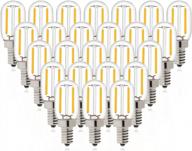

15 Review

How to use these bulbs safely?
Vintage Edison-style light bulbs with exposed filaments give off a beautiful glow. However, their unique design requires some safety precautions when using them in your home.
Electrical Safety
- Use bulbs with wattages appropriate for the light fixture. An overloaded fixture can overheat.
- Check that light sockets are in good condition without cracks, damage, or loose connections.
- Avoid using a dimmer switch and regular on/off switch on the same circuit.
- Don't exceed the recommended number of bulb connections on a dimmer.
Fire Prevention
- Keep bulbs away from flammable shades, materials or decorative covers.
- Allow proper air circulation around bulbs to prevent overheating.
- Never leave bulbs on for extended periods unattended.
- Check that outdoor lighting is rated for outdoor/damp conditions.
Handling Precautions
- Always turn off power and allow bulb to cool before replacing or cleaning.
- Don't touch the glass with bare hands - oils can create hot spots.
- Hold the base when screwing bulbs in to avoid twisting the glass.
- If bulb breaks, carefully clean glass shards using gloves and paper towels.
By taking some basic safety measures, these stylish bulbs can be used worry-free. Handle them with care, use proper fixtures, and be mindful of fire risks. Enjoy their ambient glow safely by following simple common sense precautions.
Top products in 💡 Incandescent Bulbs
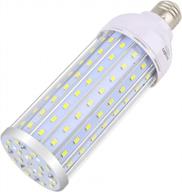

29 Review

How to make these bulbs last longer?
Vintage Edison bulbs with exposed filaments have an average lifespan of 1500 hours. Here are some tips to maximize bulb longevity.
Avoid voltage spikes
Spikes in electricity flow can shorten filament life. Use a surge protector to regulate power and prevent premature burnout.
Proper fixtures
Use fixtures designed for the bulb's shape to ensure secure contact and reduce loosening from vibration:
- E26 base bulbs - open sockets or reflector housings
- ST18 bulbs - enclosed fixtures
Limit turning on/off
Frequent power cycling stresses the filament. Use bulbs on a switch for ambiance lighting. For task lighting, minimize turning them on/off.
Avoid overheating
- Don't exceed bulb wattage limits for the fixture
- Allow space for air flow to prevent buildup of heat
- Keep away from insulation, fabrics and flammables
Use dimmers appropriately
Use dimmers within bulb wattage specs. Set to mid-range settings. Don't turn to full brightness immediately when turning on.
Handle with care
Avoid jostling or dropping bulbs to prevent filament damage. Finger oils can weaken the filament so handle bulbs with gloves or a paper towel.
With careful use, Edison bulbs can illuminate your home with their vintage beauty for years to come.
What is the use of Amazon Prime for a regular buyer of vintage Edison light bulbs?
For those who frequently purchase delicate vintage-style Edison light bulbs, an Amazon Prime membership can provide several useful benefits:
Free fast shipping
These bulbs require careful handling to avoid damage during shipping. With Prime's free two-day shipping, you can get your order swiftly and know it will arrive intact.
Prime Wardrobe for test lighting
Unsure about light color? Prime Wardrobe allows you to order bulbs to test in your home fixtures risk-free. Return what you don't like at no extra cost.
Lightning deals
Watch for Prime-exclusive lightning deals to score discounts on Edison bulb multipacks for every room.
Prime Video tutorials
Access Prime's extensive library of lighting design tutorial videos to master vintage lighting styles and see Edison bulbs used creatively.
Alexa voice controls
Pair Prime with Alexa-enabled devices to control your new smart Edison bulbs effortlessly using voice commands.
Prime Photos storage
Store and share pics showcasing your beautiful vintage lighting setups with Prime's unlimited full-resolution photo storage.
From special savings and fast shipping to handy extras like videos and voice controls, a Prime membership is a smart choice for frequent Edison bulb buyers. Sign up today to light up your home in vintage style.
Similar products
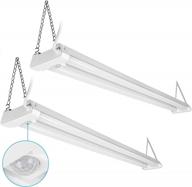

47 Review

How To Choose The Right Wattage For Your Vintage Edison Light Bulbs?
To choose the right wattage for your vintage Edison light bulbs, it is important to consider the lumens rather than the wattage equivalent. Vintage Edison incandescent bulbs produce less light (lumens) per watt compared to standard incandescent bulbs. The lumens equivalence chart for replacing standard incandescent bulbs can be used as a guide. For example, to replace a 60W bulb, choose a bulb with about 800 lumens. It is also important to consider the intended use of the bulb. For creating a cozy and soothing atmosphere full of vintage charm, 40-watt incandescent bulbs are an ideal choice. The voltage of the vintage light bulbs is 120V and the power is 6W, which is suitable for the lamp base E26 medium base. If you prefer a dimmer ambiance, choose dimmable vintage Edison bulbs.
What Is The Difference Between Lumens And Watts In Vintage Edison Light Bulbs?
Lumens and watts are both measurements of light output, but they measure different things. Lumens measure the amount of light emitted by a bulb, while watts measure the amount of energy consumed by the bulb. In vintage Edison light bulbs, the lumens per watt ratio is lower than in standard incandescent bulbs, meaning that a vintage Edison bulb produces less light per watt than a standard incandescent bulb. For example, a 60-watt vintage Edison bulb produces about 300 lumens, while a standard incandescent 60-watt bulb produces about 800 lumens. Therefore, when choosing the right wattage for your vintage Edison light bulbs, it is important to consider the lumens rather than the wattage equivalent.
How Do Lumens And Watts Affect The Energy Efficiency Of Vintage Edison Light Bulbs?
Vintage Edison light bulbs are not energy-efficient due to their low lumens per watt ratio2. This means that most of the energy consumed by the bulb is wasted as heat rather than light. For example, an incandescent Edison bulb produces only 10% of its energy as light (lumens) and 95% as heat. This inefficiency has led to the phasing out of incandescent bulbs and the adoption of more energy-efficient lighting such as LED Edison bulbs. LED Edison bulbs are designed to produce the same amount of light (lumens) as incandescent bulbs but with much less energy consumption. For example, a 6W LED Edison bulb produces the same amount of light (800 lumens) as a 60W incandescent bulb. LED Edison bulbs are also long-lasting, with a lifespan of up to 25,000 hours. Many vintage-style LED bulbs use LED filaments and are some of the best energy-saving bulbs to earn the ENERGY STAR label.







